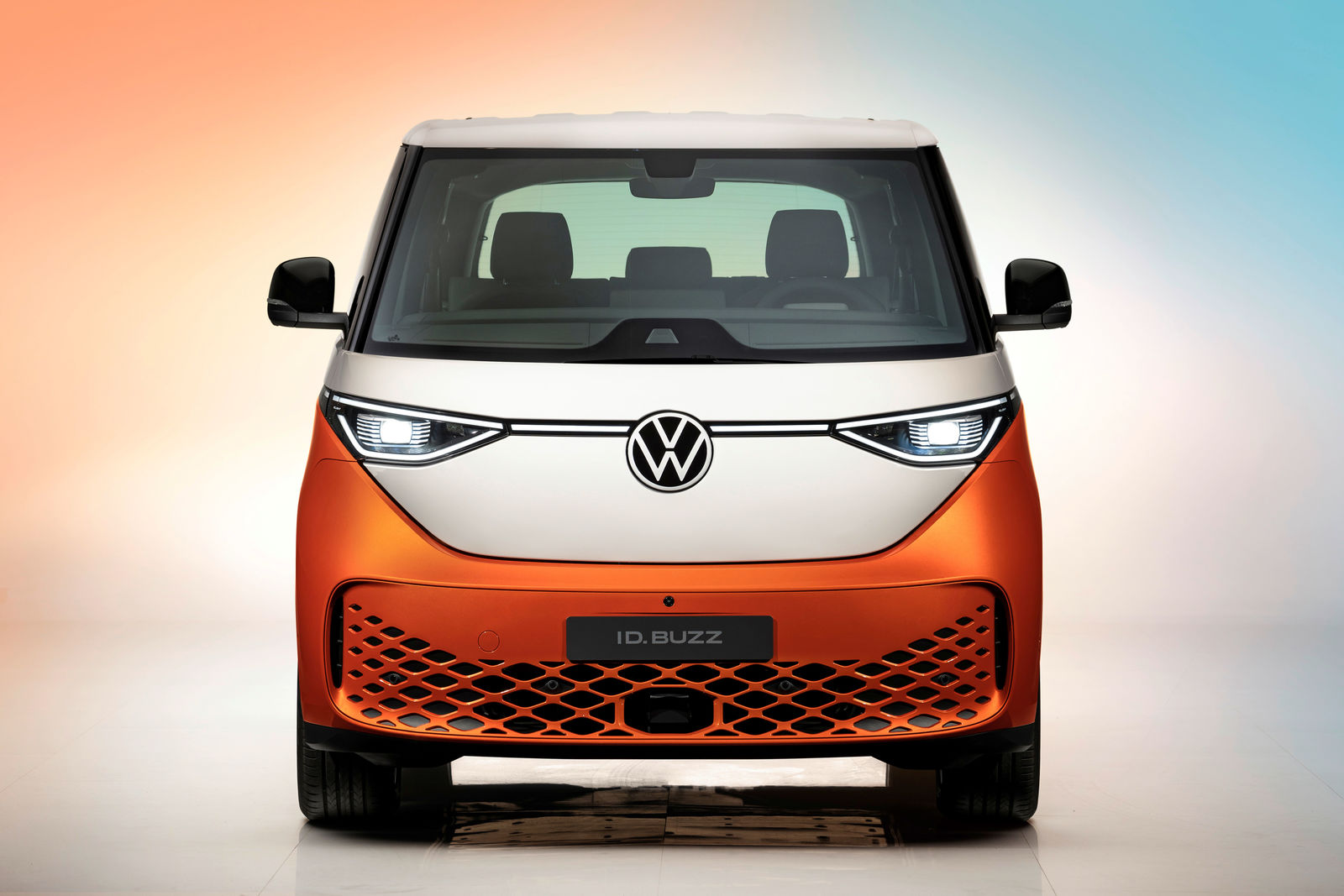The body – it all began with a concept car in Detroit
“The T1 – an icon of the 1950s – enabled people to gain mobility and freedom. With the ID. Buzz we are transferring the T1 DNA to the present day and thus into the era of electric mobility and sustainability”, says Jozef Kabaň, Head of Volkswagen Design. The visual concept of the ID. Buzz concept car shown as a world premiere in Detroit in 2017 has been systematically pursued for the full production version. Jozef Kabaň: “The ID. Buzz is timeless, sustainable and yet also extremely functional – that makes it unique.” Kabaň adds: “At the same time, it shows that it is successfully transferring the genes and stylistic elements of that iconic vehicle into the digital era.” That includes extremely short bodywork overhangs, maximum utilisation of space on a minimal vehicle footprint, splitting the bodywork design into an upper and lower level, and the iconic front with its V-shaped bonnet between the charismatic headlights.
Outstanding aerodynamics – MPV with the drag coefficient of a car
Design already followed function in the case of the T1, the first Bulli. Form follows function – this central tenet of automotive construction – applies to the design of the ID. Buzz too. The iconically clear forms are accompanied here by outstanding aerodynamics: the ID. Buzz has a drag coefficient of 0.285, the ID. Buzz Cargo of 0.29. Never before was a Bulli so aerodynamic. That reduces energy consumption and increases range.
LED technology – intelligent light is more than the new chrome
Like the new Multivan, the ID. Buzz makes full use of LEDs. At the front it’s the charismatically styled LED headlights, which turn night into day on the top version under the name ‘IQ.Light – LED matrix headlights’. The slim lateral bar between the headlights is also finished as an LED strip. Integrated in the centre of the bar as a mark of homage to the T1 is the VW logo in larger format than on all other current Volkswagens. At the back the ID. Buzz differentiates itself from the T6.1 by the horizontally rather than vertically arranged LED tail lights, and through this detail shows a clear closeness to the new Multivan. Unlike in that case, however, the LED tail lights of the ID. Buzz are connected to one another for the first time on a Volkswagen Commercial Vehicles model by an end-to-end light strip.
The welcome and farewell scenario of the optional matrix headlights (Coming- & Leaving-Home) is interactive: when someone with the vehicle’s key approaches the ID. Buzz the ‘IQ.Light – LED matrix headlights’ and LED tail lights glow briefly to welcome them, and a projection of light shows the way to the vehicle. As soon as any door gets opened, the ID. Buzz appears to say ‘Hello’ with a discreet sound and the lighting up of the interactive ‘ID. Light’ in front of the windscreen. When you leave the Volkswagen, the same happens as a ‘goodbye’. In this case too a projection of light also illuminates the surrounding area. The lighting scenarios can be individually enabled and disabled in the basic vehicle function settings.
The ‘IQ.Light – LED matrix headlights’ and the ‘ID. Light’ symbolically show that, despite all its links to the great history of the model line, the in all respects avant-garde ID. Buzz is visually pointing the way to the future. What has been created is a car without rival, because the ID. Buzz is not based on the compromise of a multi-traction platform, but is an electric Bulli from the ground up. Its short body overhangs are, for example, possible only because the zero-emission vehicle’s electric drive system is built in a very space-saving way. And that has not only visual, but also very practical advantages: these include – with maximum space utilisation – more compact outer dimensions than for a comparable model with a conventional drive system and an unusually small turning circle for this vehicle class of just 11.1 metres.
Showing its colours – the ID. Buzz gets classic two-tone paintwork
Volkswagen Commercial Vehicles will be offering the ID. Buzz and ID. Buzz Cargo – as is the tradition for the Bulli – both in the base colours and, as an alternative, also in various two-tone paintwork finishes for the vehicle body. The spectrum consists of a total of eleven colour variants: one single-colour paintwork finish (‘Candy White’), five metallic finishes (‘Mono Silver’, ‘Lime Yellow’, ‘Starlight Blue’, ‘Energetic Orange’ and ‘Bay Leaf Green’), one pearl effect finish (‘Deep Black’) and four two-tone paintwork finishes. Whenever the zero-emission Bulli is ordered in one of the two-tone paintwork finishes, the upper section including roof and V-shaped bonnet will always be in ‘Candy White’. The areas below the character line running around the vehicle are in this case then in one of a choice of four metallic shades: ‘Lime Yellow’, ‘Starlight Blue’, ‘Energetic Orange’ or ‘Bay Leaf Green’.
